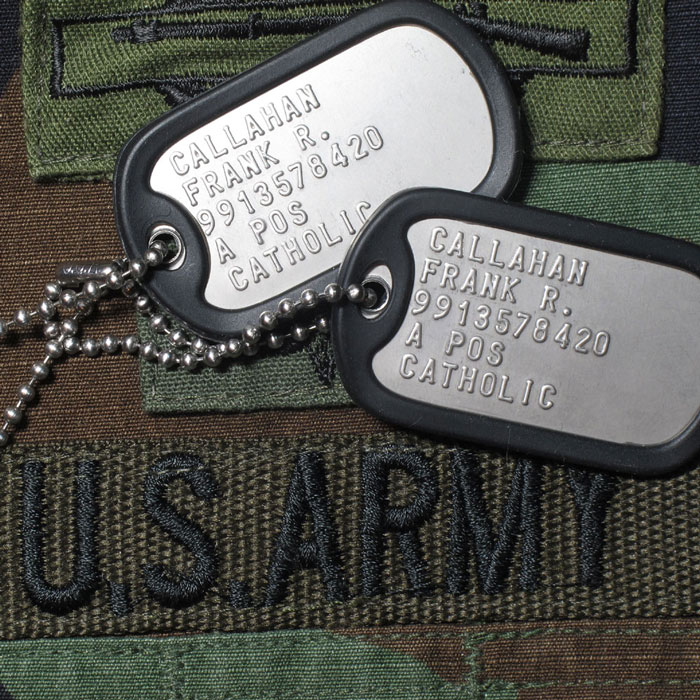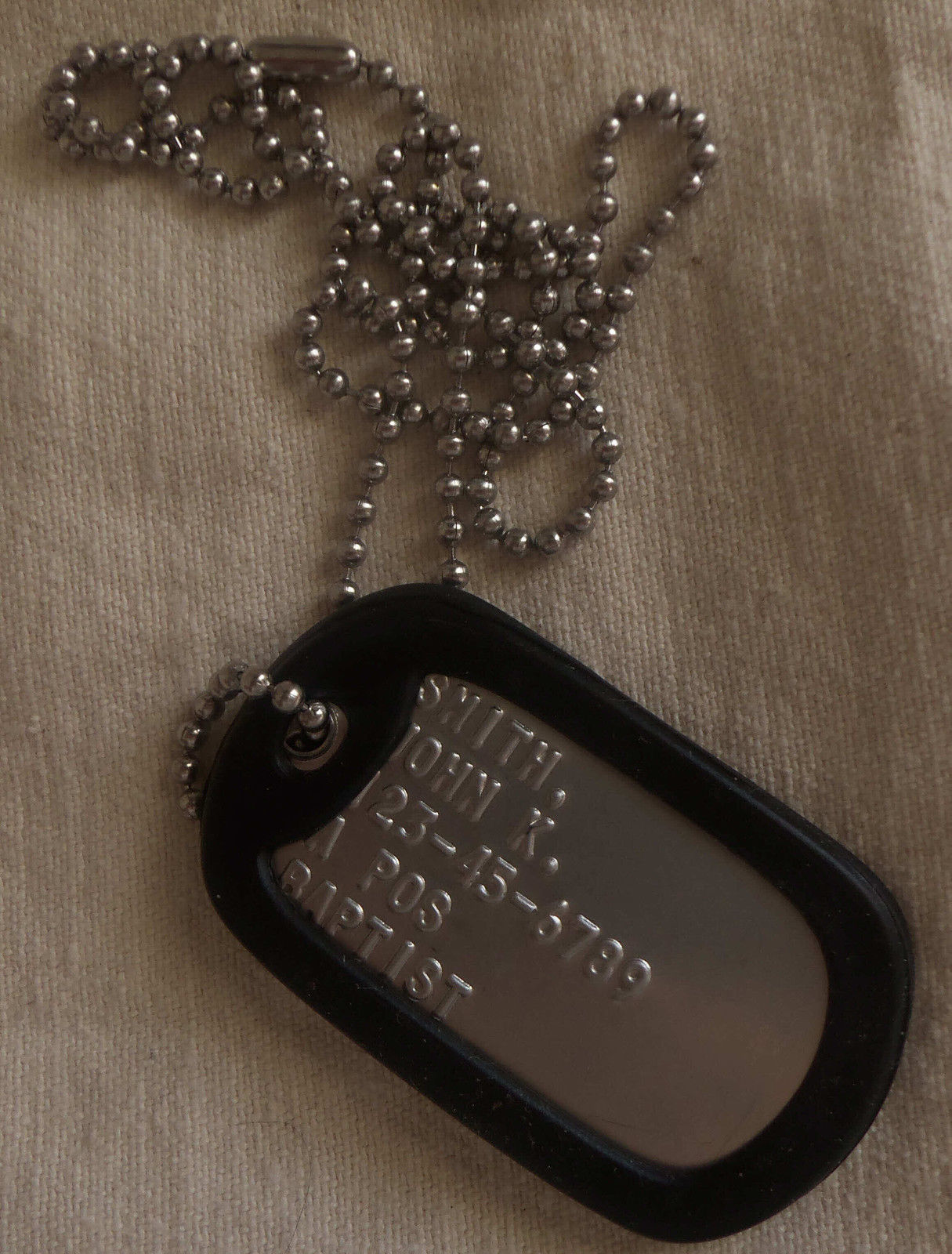

Identifying remains is a more detailed process than simply relying on the service member's dog tags.īut still, dog tags remain an important symbol of military service, one that connects today's troops to the traditions of the past.

Today, dog tags aren't as necessary for identification purposes, given the advances in DNA technology, along with more detailed recordkeeping by the U.S. Aluminum tags gave way to stainless steel. Notched dog tags were phased out by the 1970s, when the machines that required notches were replaced with more advanced embossing machines. In the Vietnam era, combat troops started to lace their second tag in their boots, the way United States Marines wear them today. But it wouldn't be put in the mouth of the deceased. (Soldier's Museum)ĭuring the Korean War, the second tag was put on a much shorter chain, attached to the main chain, for a similar reason. Admittedly, the notch does look made for teeth.

Other good resources can be found at and. One place to begin is the Army Public Health Command Web site,, which contains many resources such as the Spiritual Fitness Inventory and the Boosting Resilience through Spirituality brochure. There are many resources available to explore one's spirituality. According to Army Regulation 600-63 (Army Health Promotion), "When a person's actions are different from his or her stated values, the person lives with inner conflict." Claiming "No Religious Preference" is unclear-are you an atheist or agnostic, or a Christian who does not affiliate with any particular denomination? Our outlook and world view affect everything we do, including how we treat others. The problem is that some people don't understand how important spirituality is to the whole person. "Why am I here?" "What is my purpose in life?" Why is there evil and suffering in the world?" Even atheism and agnosticism are beliefs, and belief matters. It's not just the practice of prayer or meditation. Sometimes people say something like, "I'm not religious, but I'm a spiritual person." Spirituality is not limited to a Christian who goes to church every Sunday, a Muslim who prays five times a day while facing Mecca, or a Jew who keeps a kosher kitchen. Spirituality is not just a belief in a higher power, but includes beliefs, ethics and values, even a sense of what is fair. But what to put down as a religious preference is serious business, because spirituality is important. Service members can generally put whatever religious preference they want on their tags, including "Atheist" or "Agnostic." Some even ask for "Jedi" or "Druid." There is no list of official or approved religions-after all, that would constitute government endorsement of a particular religion. "No Religious Preference" and "None" were eventually added today many faith groups and broad denominations are available, reflecting the diversity of the armed forces. Obviously, that proved to be too limiting. Today's identification tags identify vital information about the wearer: name, Social Security number, blood type and religious preference.ĭuring World War II there were only three religious categories that could be put on dog tags: P for Protestant, C for Catholic and H for Hebrew (Jewish). But there was no standardization as to what was included. Some units paid for more durable identification. Soldiers at that time would often write basic information about themselves on a piece of paper and pin it to their uniform in case they were killed or badly injured. Dog tags have their origin in the Civil War, but only unofficially. Officially they are identification tags but almost everyone calls them dog tags. What do you want others to know about you? What if you had to limit that information to only four lines?Īnyone who has served for any length of time in the military is familiar with those metal ovals worn on a chain around the neck.


 0 kommentar(er)
0 kommentar(er)
